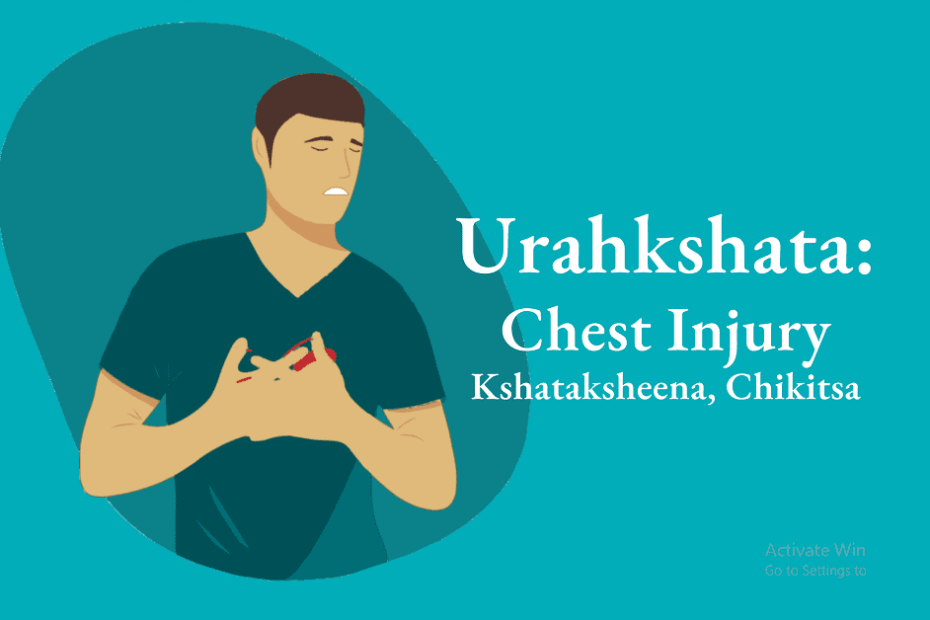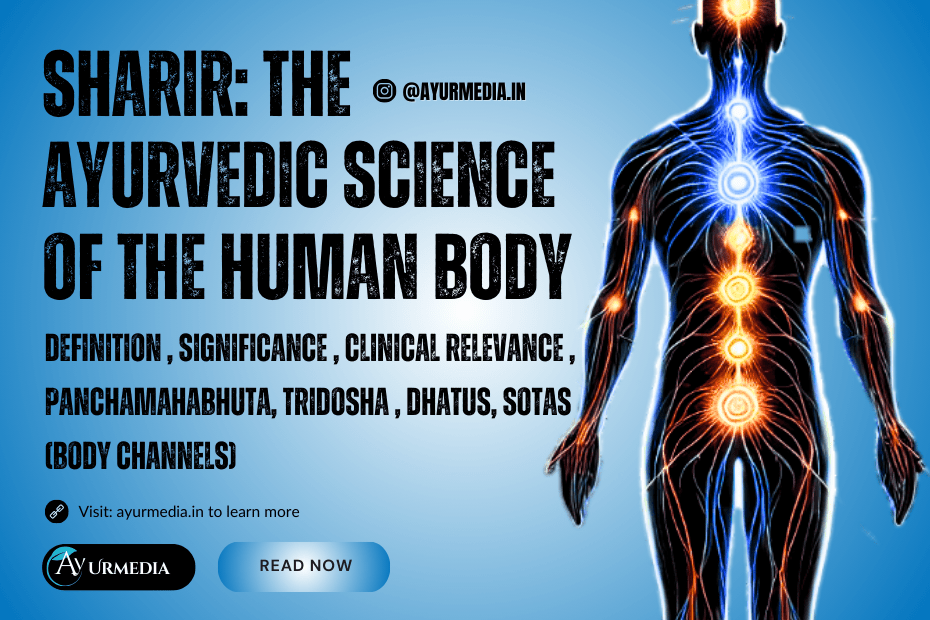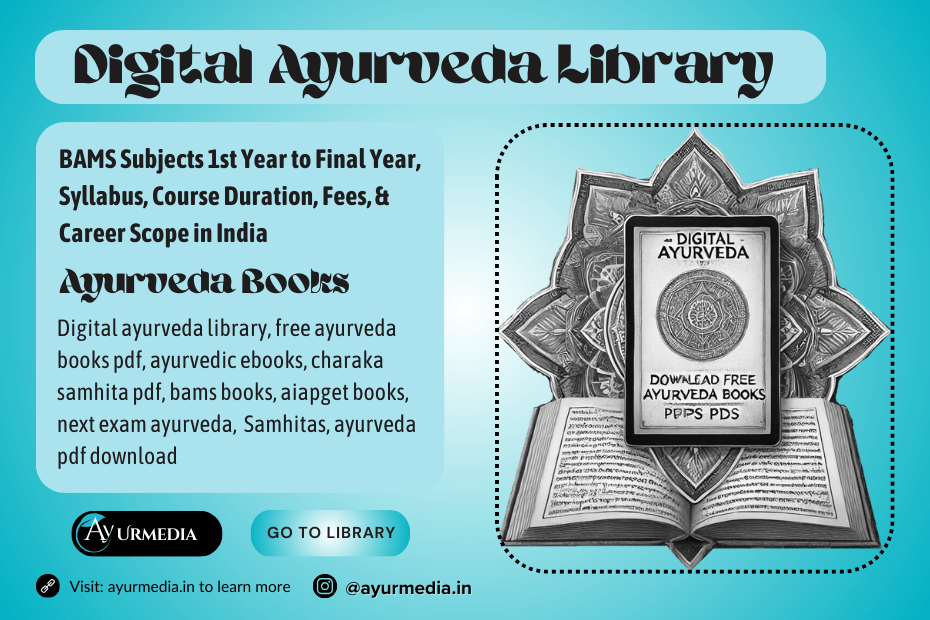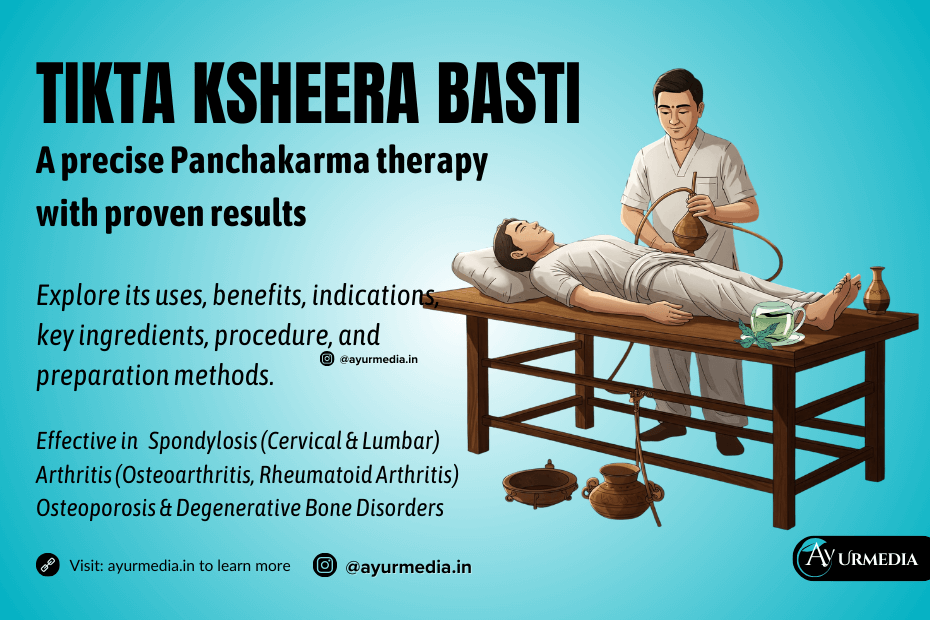Urakshata, also known as Kshatksheen, is described as an independent disease in the Charak Chikitsa Sthan Adhyay 11.
Urakshata or Kshatksheen has been considered by some Acharyas to be different diseases, but both are the same disease.
Urahkshata means injury to the chest or pulmonary rupture similarly Kshataksheena means emaciation due to Kshata (trauma). So the emaciation or depletion of tissue due to trauma is called Urahkshat or Kshataksheena.
This disease mainly occurs in the Urah (chest) region, hence it is called Urhkshata or Kshatksheen. Urhkshata or Kshataksheen is any type of impairment or injury to the chest region.
Patients suffering from Urakshata become excessively emaciated due to Dhatu Kshaya (depletion of Dhatu). The treatment mainly involves Santarpana (nourishing therapy), and Stambhana therapy followed by palliative treatment.
Urhkshata requires immediate attention, neglecting this condition may give rise to dreading Rajayakshma disease.
Nidan (Etiology) of Urakshata
As per the Sanskrit Verses.
- Straining in heavily with a tough bow.
- Carrying heavy load.
- Falling from uneven heights.
- Fighting with the stronger persons.
- Restraining a running bull or a horse.
- Throwing stones, wood, or equipment made of stones.
- Studying very loudly.
- Running long distances, Moving very fast or far away quickly.
- Crossing a great river.
- Running with horses.
- Suddenly jumping away or high jumping.
- Dancing very quickly or practicing violent dancing.
- and of being severely afflicted by other cruel deeds.
- Who is also very attached to sexual activities and eats irregularly very dry and little in moderation.
The above etiological factors lead to injury to the chest and lung, the disease is strongly manifested in the wounded chest.
Samprapti (Pathogenesis) Urakshata
As a result of the factors mentioned above the patient’s thoracic region gets damaged and cracked and there is weakness and pain on both sides. The limb trembles and gradually strength, complexion, potency (fertility), appetite, and Agni (digestive fire) get diminished. After this, the patient suffers from fever, body aches, anxiety, mental weakness, and diarrhea.
In such a situation, when the patient coughs, black-colored, foul-smelling, yellow nodular, and blood mixed phlegm comes out.
In this way, the patient becomes very weak due to damage to the lungs. And further diminution of Shukra and Ojas leads to more debilitation.
Purvaroopa (Prodromal features)
Since the Kshataksheena occurs abruptly so there is no appearance of premonitory signs. Manifested Symptoms are the only indicator of disease.
The manifest symptoms of Urakshata are mentioned below.
Roopa (Symptoms)
If there is Kshata (chest trauma) then the patient shows the following manifestations.
- Uro Ruja (Chest pain)
- Shonita Kshardi (hemoptysis or blood vomiting)
- Kasa (Coughs)
If there is Kshaya (depletion of tissue and dhatu) then the patient shows the following symptoms.
- Saraktamutrata (Haematuria)
- Parshva Prishth Katigrah (stiffness on the sides of the chest, back, and lumbar region)
Sadhyasadhyata (prognosis) of Urakshata
If the patient is healthy and has enough strength, signs, and symptoms are minimal, the patient has good digestive power (good appetite), and if the disease is new (early stage), then it is curable.
If the disease persists for more than a year (chronic) then it is Yapya (pliable).
However, when all the signs and symptoms of the disease appear simultaneously, then such a patient should not be treated, for such a condition is incurable.
Urakshata Chikitsa (treatment)
Pathologically, the disease is characterized by Dhatu Kshaya (depletion of tissues). Hence the treatment mainly includes Santarpana or Brimhana (nourishment) therapy, replenishment of tissue loss, Stambhana therapy (preventing fluid loss), therapeutic massage, Rejuvenation therapies, and Pathya (recommended diet).
Shodhana Chikitsa (Purification therapy) is not recommended for this disease.
- If there is an acute injury to the chest, Laksha (lac) should be given along with milk and Madhu (honey). Sugar and milk should then be given.
- If there is Parsva Basti Ruja (pain in the sides of the chest or in the hypogastric region), with Alpa pitta and Agni, then the patient should be given Laksha (lac) along with sura (alcoholic drink).
- Laksha (lac) should be administered along with Musta (cyperus rotundus), Ativisha (aconitum heterophyllum), Patha, and powder of Vatsaka bark if diarrhea is present.
- For patients with strong digestive power. They should be given milk cooked with Laksha, ghee, bee wax, drugs from the Jivaniya group, sugar, and Tvaksiri.
- In order to heal the injury, it is recommended to consume milk boiled with Ikshuvalika, Bisagranthi, Padma Kesara, and Chandana (sandalwood) with honey added.
- For patients with fever and burning sensations in the body, then barley powder cooked with milk and added ghee is recommended.
- For patients with cough and pain on both sides of the chest, then it is advised to take linctus prepared of the powder Madhuka (flower), Madhu (Honey), Draksha (Vitis vinifera), Tvakshiri, Pippali (piper longum), and Bala (sida cordifolia) mixed with ghee and honey.
Excessive bleeding treatment
In case of excessive bleeding, taking Daksha (wild hen) eggs along with green gram soup or water is recommended. Alternatively, the patient can take sparrow’s egg soup or preparations made from goat or wild animal blood (such as deer).
In order to treat hemoptysis, patients are advised to take Punarnava powder, Shali rice (red variety), and sugar cooked along with grape juice, milk, and ghee.
Shamana Chikitsa (palliative Treatment)
Aushadh Yog (Formulations and medicines)
The following Formulations and medications are used for palliative treatment.
- Laksha Churna
- Yashtimadhu churna
- Eladi gutika
- Amritaprasha ghrita
- Shvadamshtradi ghrita
- Suvarna malini vasanta
- Lakshmi Vilasa
- Sarpi gud
- Chandanasava
- Ushirasava
- Drakshavaleha
- Vasavaleha
- Draksharishta
- Kamdhudha
- Vanga mishrana
Recommended Diet and drinks
Whatever is nourishing and satisfying, Sheeta (cooling), Avidhahi (which does not cause a burning sensation), and good and light to digest food and drink should be consumed by the patient for a speedy recovery. Whatever is said is a remedy for Rajayakshma (tuberculosis), Raktapitta (bleeding disorders), and coughs.
Require immediate attention
Kshatkhina requires proper treatment. If neglected, it can lead to Rajayakshma (tuberculosis). The patient should be cured before the dreaded complication Rajayakshama.



